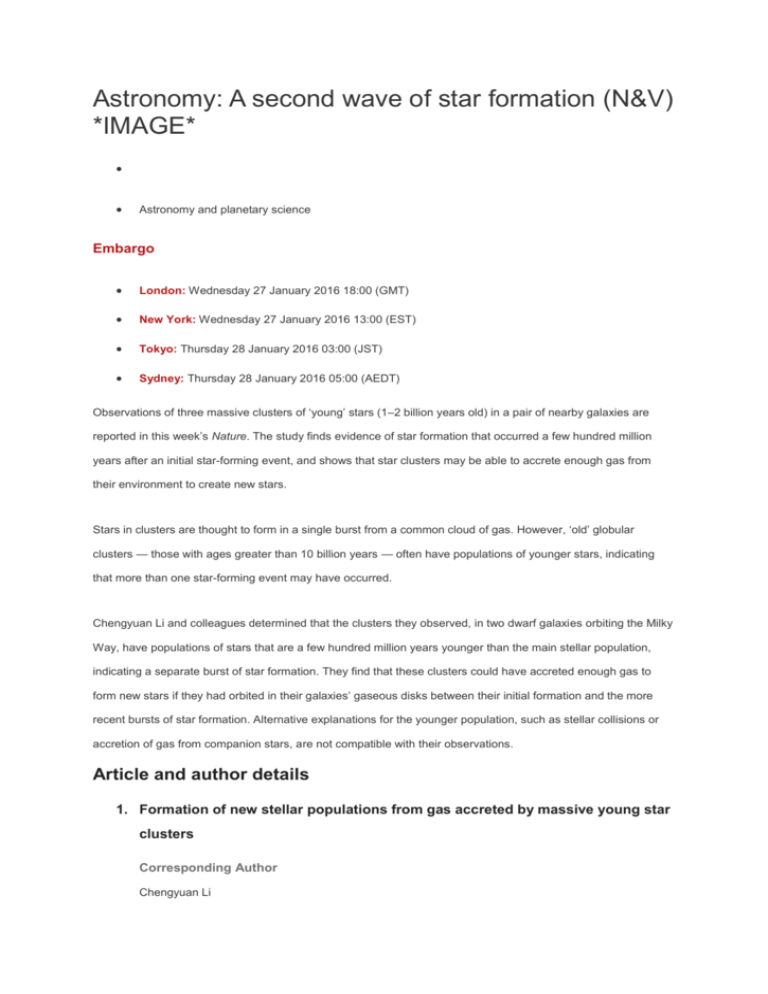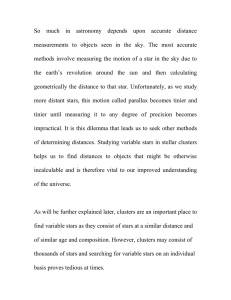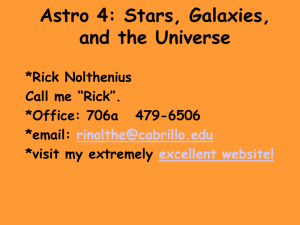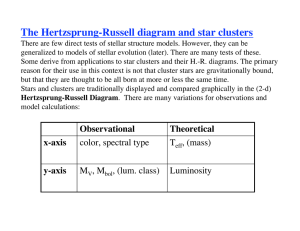Media Release
advertisement

Astronomy: A second wave of star formation (N&V) *IMAGE* Astronomy and planetary science Embargo London: Wednesday 27 January 2016 18:00 (GMT) New York: Wednesday 27 January 2016 13:00 (EST) Tokyo: Thursday 28 January 2016 03:00 (JST) Sydney: Thursday 28 January 2016 05:00 (AEDT) Observations of three massive clusters of ‘young’ stars (1–2 billion years old) in a pair of nearby galaxies are reported in this week’s Nature. The study finds evidence of star formation that occurred a few hundred million years after an initial star-forming event, and shows that star clusters may be able to accrete enough gas from their environment to create new stars. Stars in clusters are thought to form in a single burst from a common cloud of gas. However, ‘old’ globular clusters — those with ages greater than 10 billion years — often have populations of younger stars, indicating that more than one star-forming event may have occurred. Chengyuan Li and colleagues determined that the clusters they observed, in two dwarf galaxies orbiting the Milky Way, have populations of stars that are a few hundred million years younger than the main stellar population, indicating a separate burst of star formation. They find that these clusters could have accreted enough gas to form new stars if they had orbited in their galaxies’ gaseous disks between their initial formation and the more recent bursts of star formation. Alternative explanations for the younger population, such as stellar collisions or accretion of gas from companion stars, are not compatible with their observations. Article and author details 1. Formation of new stellar populations from gas accreted by massive young star clusters Corresponding Author Chengyuan Li Peking University, Beijing, China Email: joshuali@pku.edu.cn, Tel: +86 18168 054025 N&V Author Antonella Nota Space Telescope Science Institute and European Space Agency, Baltimore, MD, USA E-mail: nota@stsci.edu DOI 10.1038/nature16493 Online paper* http://nature.com/articles/doi:10.1038/nature16493 * Please link to the article in online versions of your report (the URL will go live after the embargo ends). Image 1 Caption: A portrait of the massive globular cluster NGC 1783 in the Large Magellanic Cloud taken by the Hubble Space Telescope. This dense swarm of stars is located about 160,000 light years from Earth and has the mass of about 170,000 Suns. Credit: ESA/Hubble & NASA











